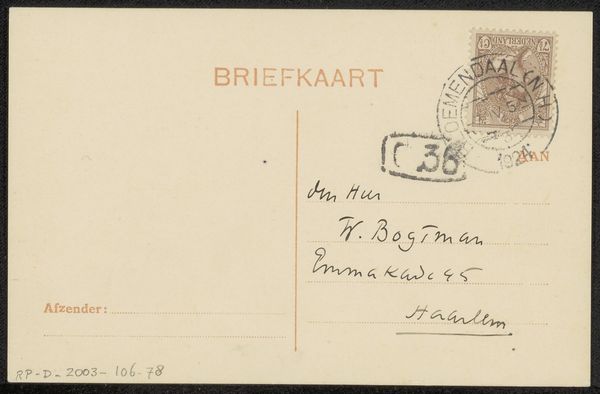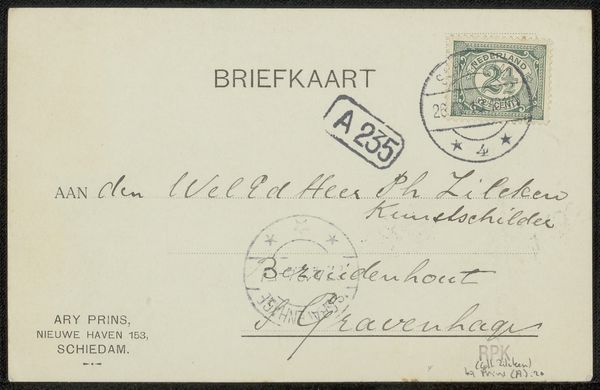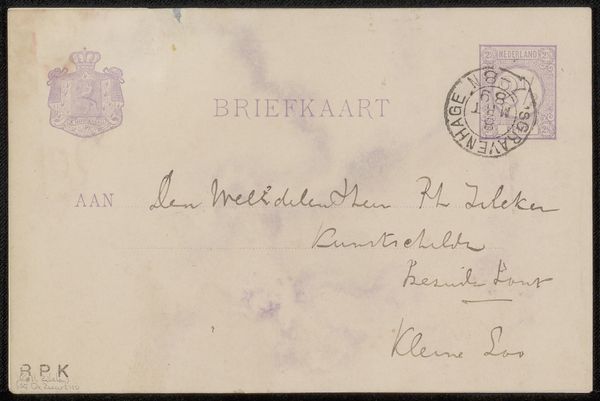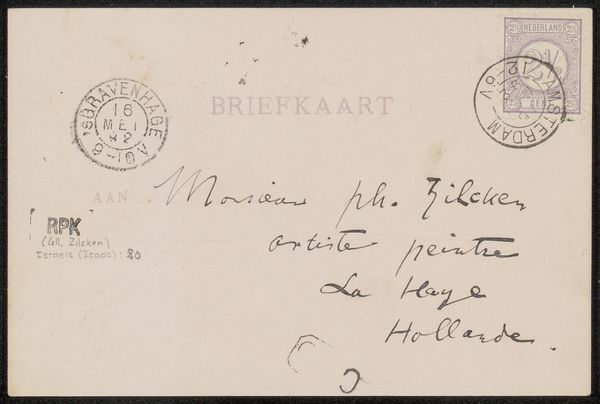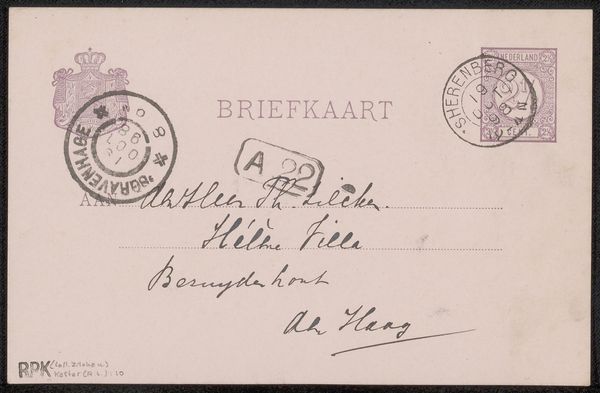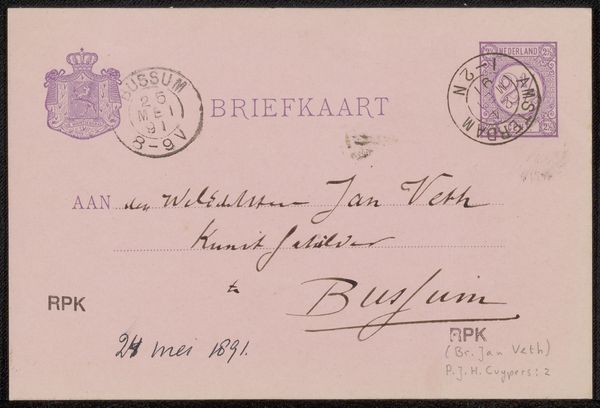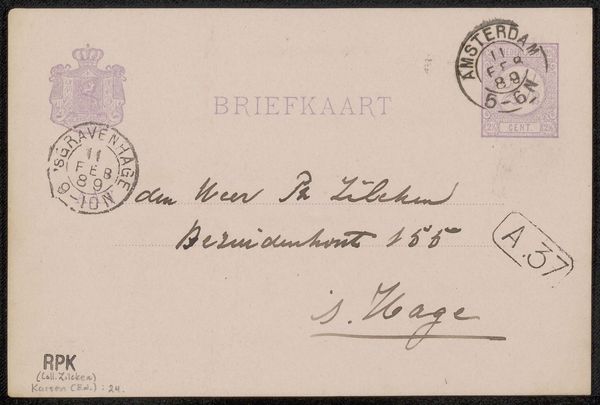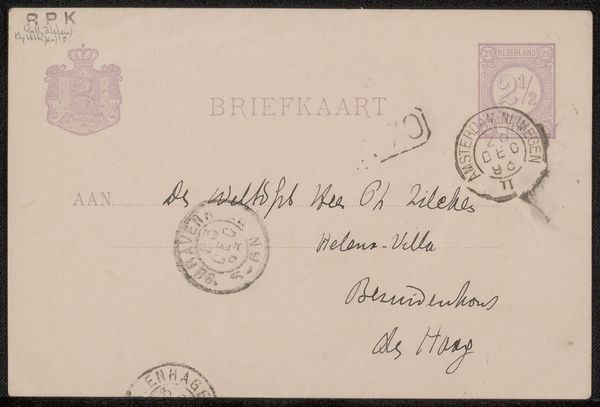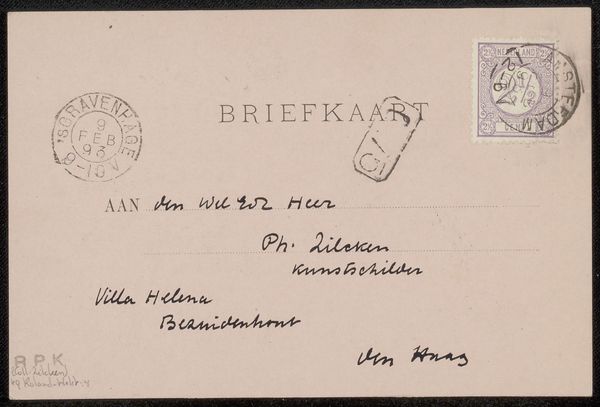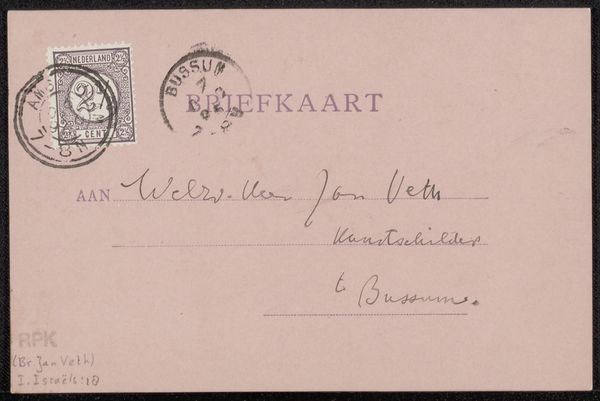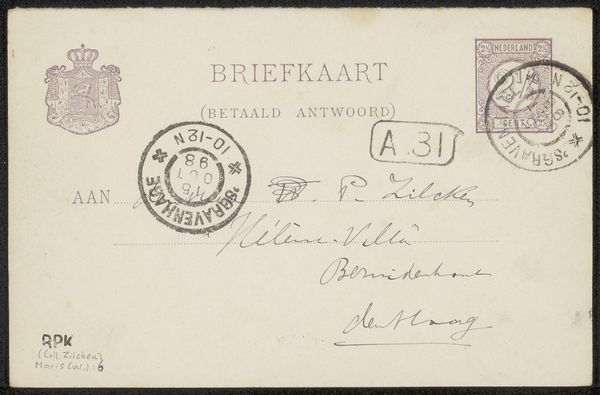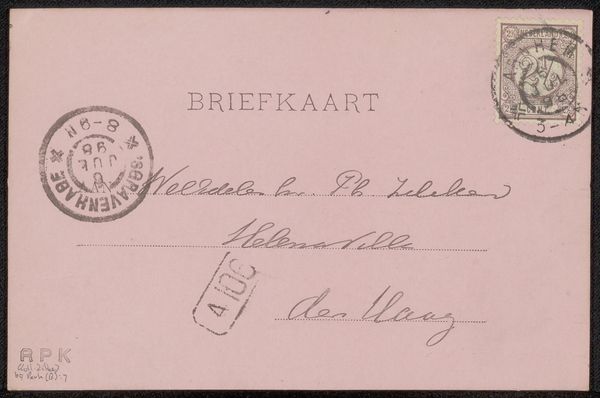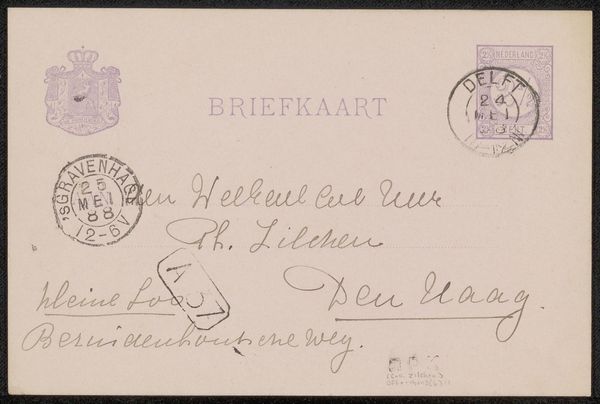
drawing, paper, ink, pen
#
drawing
#
comic strip sketch
#
pen sketch
#
hand drawn type
#
paper
#
personal sketchbook
#
ink
#
idea generation sketch
#
ink drawing experimentation
#
pen-ink sketch
#
sketchbook drawing
#
pen
#
storyboard and sketchbook work
#
post-impressionism
#
sketchbook art
#
calligraphy
Copyright: Rijks Museum: Open Domain
Editor: This is "Briefkaart aan Philip Zilcken," a postcard to Philip Zilcken by Richard Nicolaüs Roland Holst, made before 1894. It’s pen and ink on paper, held at the Rijksmuseum. It’s a humble everyday object, but I’m intrigued by the stark typography and the handwriting as elements in the overall design. What stands out to you? Curator: Precisely. Note how Holst deploys varied visual languages on the small surface of the postcard. We have the printed word “BRIEFKAART,” juxtaposed against the cursive script addressing the recipient. Consider the careful arrangement, a compositional tactic. The placement of the postal stamps acts as visual anchors, creating a balanced asymmetry. How do you interpret the handwritten text in relation to the printed word? Editor: Well, the handwriting feels more personal, less formal than the blocky printed text, “BRIEFKAART.” Is the contrast deliberately trying to balance formality and casual expression? Curator: Indeed, examine how the gestural quality of the handwriting, the loops and the varying line weights, introduces dynamism into what might otherwise be a static composition. Holst's choices here prompt a further reflection: in what way does the interplay between different textures and forms impact the overall reading of the message? What's essential in a piece such as this are the contrasting textures, the dynamic quality of a familiar mundane item and what is communicated from that approach. Editor: I never considered typography as such an important part of the image itself. Curator: Exactly. Formalism teaches us to closely examine an object’s internal structure in order to glean information, regardless of its apparent significance, or insignificance. Editor: I’ll certainly look at art—and postcards—differently now. Thank you!
Comments
No comments
Be the first to comment and join the conversation on the ultimate creative platform.
